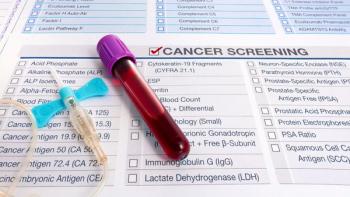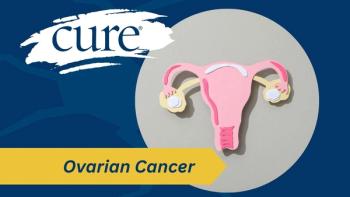
Breast Implant-Associated Cancer: What You Should Know
A lymphoma expert discusses implant removal, reconstruction and the signs of anaplastic large cell lymphoma.
Textured breast implants and its associated risk with a rare type of non-Hodgkin lymphoma has made headlines since earlier this year. The biggest move to date came in July when the Food and Drug Administration (FDA) asked Allergan, a breast implant manufacturer, to voluntarily recall certain textured models of its breast implants and tissue expanders.
But what does this all mean? And just how great is the risk of developing cancer?
Dr. Leslie L. Popplewell, a hematologist/oncologist specializing in lymphoma at City of Hope in Duarte, California, says this has been a long developing story. She and colleagues reported the phenomenon in an abstract to the American Society of Hematology in 2004. But, she says, it did not get much attention. In an interview with CURE®, Popplewell provides an in-depth look at textured implants and anaplastic large cell lymphoma.
CURE®: Should women with textured implants have them removed?
Popplewell: Given that most women with these implants do not get lymphoma, and that removal of implants is a surgery with its own potential complications, proactive removal of the implants is not being recommended. But women with the implants should be sure to seek medical attention if they develop swelling, pain or new asymmetry of the breasts.
Are there implants that are safer options for those who wish to get them or reconstruct?
There are many choices available for women who need breast implants for either cosmetic or reconstructive use. Only certain textured implants are being recalled, and there does not appear to be any increased risk with use of the other implants.
In the
Right now, we don't know enough about why this specific lymphoma develops in the presence of a textured implant. One study looked at cultures from fluid from implant capsules in women diagnosed with this implant-related lymphoma and found that it did not grow bacteria, but a later study that compared implant capsules of affected patients with capsules from unaffected women did demonstrate some bacteria, with a predominance of gram-negative bacteria. There are other theories, though, about what causes a lymphoma like this to develop, and this has to do with an inflammatory response by the body to the material in the textured surface.
Have any of these cases been in men?
Women are disproportionately affected because of their association with breast implants. I'm not aware of any cases in men, but there's no reason that men couldn't have similar problems if exposed to the same kind of implant.
How rare is
Lymphoma, in general, is not a very common kind of cancer and accounts for only about 5% of all cancers diagnosed each year in the United States. There are many different kinds of lymphoma — more than 60 different subtypes — and the number is always changing as we learn more and make new categories. Finding lymphoma in the breast does happen sometimes, although usually it is a B-cell lymphoma. This kind of T-cell lymphoma is uncommon and to find it in the breast without other systemic disease present is exceedingly rare.
In terms of women who have breast implants, there have been a few studies that tried to find that information. One study from the Netherlands estimated that, of women with these kind of implants, about one in almost 7,000 would get this lymphoma. Another study in the U.S. estimated a lifetime prevalence of one per 30,000 patients with textured implants.
Treatment involves removal of the implant, the surrounding capsule as well as any associated mass. If an implant is being removed, it is important that the capsule and surrounding fluid be examined by a pathologist and that testing of that material include evaluation for lymphoma. Most of these lymphomas are very localized, but standard staging workup to look at the rest of the body for any distant spread is important, and chemotherapy would be recommended if all the mass could not be removed or if distant spread is seen.
What are the signs of breast implant-associated anaplastic large cell lymphoma?
Patients with this kind of lymphoma usually present with pain or swelling in the breast and usually some asymmetry of breast size. When the breast is evaluated, usually some fluid is present around the implant.
Does it occur within a few years, or is this something people have to worry about years down the road?
The average length of time that the implants have been in place when the lymphoma diagnosis is made is six to seven years, but it has been reported as early as two years after placement or as long as 30-plus years after placement.
What message do you want to share with patients, survivors and caregivers?
Overall, this kind of lymphoma represents a very small subset among all lymphoma cases. If you have had implant surgery, it should be easy to find out what kind of implant was placed at the time. If a surgery is needed, then at the time of removal, it's important to look for the lymphoma cells when the implant and capsule are removed. Pathologists should be informed of the level of suspicion for this lymphoma when a breast implant is removed.





